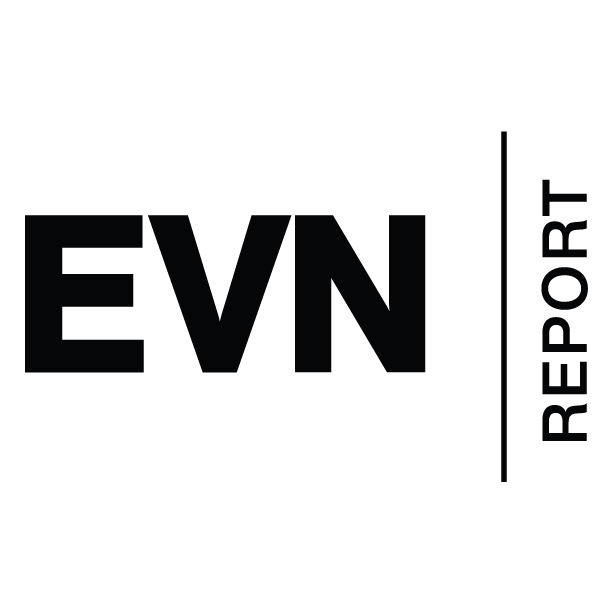

In September 2019, the Foundation for Armenian Science and Technology (FAST), the Ministry of Defense of the Republic of Armenia and the Hi Tech Cyber Security Center Foundation signed an MOU, based on which FAST began conducting preparatory courses for Unit 1991, a new military unit focused on strategic technological applications for the Armenian Armed Forces. The courses begin six months before each round of conscription. The courses are free, intended for both boys approaching the age of conscription and girls who have a bachelor’s degree in STEM and are willing to join Ministry of Defense projects as volunteers or employees upon completion of the course. To participate in the course, applicants must be proficient in high school mathematics and have some experience with basic programming. Participants study mathematics and computer science, including machine learning and neural networks, which they then apply in their final group projects. These projects also effectively serve as preparation for the entrance exam for Unit 1991.
To establish Unit 1991, amendments were made to Government decision N8-N to define selection procedures for appointment to military service, as well as creating the draw and selection commissions. The Unit was created in August 2020, a month before the 44-day war but the preparatory courses began in January 2020. During the first three months, participants study linear algebra and analytic geometry, mathematical analysis, probability theory and the fundamentals of programming in Python. They are also taught the fundamentals of machine learning and deep learning (neural networks). The foundation has made the educational materials, in Armenian, publicly available.
A capstone project concludes the course. Lecturer Nshan Potikyan states that 15 capstones have been completed so far. The projects can have both civilian and military applications.
The Ministry of Defense does not finance FAST’s courses. Funding for the courses come from private fundraising initiatives.
Davit Ghazaryan, who is in charge of the program, says that he cannot pinpoint any specific event after which the creation of such a unit became a necessity. He says that the idea took shape over the years and by 2019, it was time to launch it. “To be fair, we should have started it a long time ago, in the 1990s,” says Ghazaryan.
Unit 1991 was modeled on the United States’ DARPA agency, Israel’s Unit 8200 and the Russian Era Technopolis. “The basis for all of these is the creation of arms using the latest technologies,” says Ghazaryan.
According to the program’s schedule, the number of participants should reach 300 within three years and several research projects should be implemented. Within five years the program should achieve commercialization of products.
From Capstone Project to the Labor Market
Davit Tumanyan, a former participant in Unit 1991, decided to quit football and become a programmer several years ago. He was particularly interested in machine learning which is why, in 2021, he participated in the FAST Foundation course. After completing it, he was granted a year’s deferment from conscription. He did an internship at FAST, and was then employed by Locator, the company where he now works as a machine learning engineer.
Tumanyan says that his capstone project was on object detection and classification. “Using artificial intelligence, the machine learning program was able to find and categorize objects in a photo, such as a house, a street, or a building,” he explains. “Five of us worked on that project. Afterwards I started a new project at FAST – a program that could find the difference between two images. The machine learning model is able to find the difference between photos of the same place taken at different times – like what newly constructed building or street can be seen in the photo. Let’s say one of the photos was taken in 2010 and the other – 10 years later. The model can identify what changes occurred in that area, for example newly planted trees, or the construction of a building or street. After working on the project for a few months, I was hired, and the project’s development was left to students who came after me.”
Examples of capstone projects completed by students have ranged from computer vision problems to natural language processing systems. One project detected instances of fire in images, which could be used to automatically detect fire outbreaks in forests. Another student built an object detection system that can identify what different objects there are in an image. In addition to computer vision projects, students also worked on natural language processing systems to classify the topic of a news article, and voice recognition models.
Evaluating the Projects’ Effectiveness
According to Tumanyan, the instructors at Unit 1991 are highly qualified specialists. While taking the course, he was simultaneously studying the same subjects at the Armenian-Russian University. However, the knowledge he received there was mainly theoretical, and what he was learning in FAST was helping him “digest” the instruction provided by the university.
“Mathematics is taught in depth. Then you start applying it and fully understand all the mathematical equations,” he says. “They don’t teach it in such depth in other places––usually they teach it more superficially, but FAST doesn’t leave anything unexplained. It gives you all the mathematical proof of how things work. If you don’t know what is going on and you don’t know those mathematical equations, then moving forward in the future will be almost impossible.”
According to Nshan Potikyan, 410 participants have completed the program so far. Some of them began serving in Unit 1991, and others have been employed by companies in the AI sector, such as Krisp and Picsart. He considers this a sign of the course’s efficacy.
“The course is effective, because those in Unit 1991 also find their place in the labor market,” says Potikyan. “Students also develop an interest in science, because we show them how the mathematics they learned in school can be useful…and in order to succeed, they should delve deeper into it.”
According to Davit Ghazaryan, since the program is new, it’s currently difficult to evaluate its effectiveness, but the trends are promising. “The results are positive,” he explains. “When we compare the projected result and the actual result obtained two years later, they are quite close. They are not exactly the same, but very close.”
Competition Procedure
The entrance exams for service in Unit 1991 are conducted by the Ministry of Defense. The admissions committee consists of Ministry of Defense employees, but there is also a professional committee, which includes specialists from tech companies that work with AI in Armenia.
In the first stage, participants are scored based on a written test consisting of questions on the subject matter. Conscripts who pass the first stage are then qualified to continue in the following specializations: programming, cyber security and network/system administration.
After the first stage, conscripts with 23 or more points move on to the second stage of qualification. Those who have scored 16 to 22 points receive Grade B qualification and don’t pass to the second stage. They participate in the draw for recruitment in communications, air defense and artillery training units of the Armed Forces if their medical and physical condition allows, and if the training units have vacancies.
In the second stage, a conscript’s final grade comprises the average of scores given by all members of their particular evaluation committee. At the end of the second stage evaluation, conscripts who have scored 8 or more points receive Grade C qualification. Conscripts who have scored 6-8 points receive Grade B+ qualification. Conscripts who have scored less than 6 points receive Grade B qualification.
Conscripts who receive Grade C qualification are assigned by draw to the modern technology development group. Conscripts who receive Grade B+ qualification are assigned by draw to the Unit 1991 training group. Those who receive Grade B participate in the draw for service in communications, air defense and artillery training units of the armed forces, if their medical and physical condition allows, and if the units have vacancies. See the details here.
Other than the course participants, people who have the necessary knowledge can also apply for service in Unit 1991. At the moment all members of staff in Unit 1991 are alumni of the course.
Why Join?
Throughout their service, young men and women will acquire practical knowledge and be able to contribute to scientific progress and the development of Armenia’s high-tech sector. Once discharged they will have the opportunity to work in the Ministry of Defense, tech companies or research organizations, or build their own start-ups.
While these are the official advantages of the program, program leader Davit Ghazaryan says it will also give soldiers extensive experience, two years of active employment in their chosen specialization, and a chance to use their skills for the country. Ghazaryan says they are working on making service in Unit 1991 more attractive by elevating its reputation.
“We are going to start working on prestige to make people want to serve in Unit 1991 honor. Wherever they go, people will say ‘Did you serve there? Then come to us tomorrow. No, not tomorrow, come right now!’”
Further Development
There are plans to create products based on scientific research. The civilian version of the products will be sold by the state to make Unit 1991 a self-financing structure.
Ghazaryan says the idea is for Unit 1991 to commercialize its activities. “For example, it can create a drone, the civilian version of which will be used in agriculture. If we can do it, we will have dual purpose products and the state will sell them,” he explains. “Even military products can be sold by the state. That is one of our main goals. We are still at the beginning of the road map, but we are taking steps in that direction. We need time.”
Some of the participants’ final projects have the potential for further study in Unit 1991. But details about those projects cannot be shared, says Ghazaryan. He believes that the 2020 Artsakh War underscored the importance of technological progress. It is the era of smart weapons and having qualified officers is becoming more and more imperative.
Creative Tech
The (Unrealized) Imperative of AI in Armenia
Exploring the emerging AI industry landscape in Armenia is necessary to ensure not only that the country is in a position to advance the benefits of the “ideologized” technology, but also the resolve to mitigate future risks.
Read moreIs Science Back on Armenia’s Agenda?
Armenia’s Science Committee has launched ambitious grant programs to attract scientists and researchers from around the world to come to Armenia and strengthen scientific excellence in the country.
Read moreWomen in Tech: Not Enough, Not Yet
No one can refute the success stories and statistics of Armenian women in tech. Taking a more holistic view, however, one finds that the narrative isn’t quite so simple or straightforward.
Read moreHyeTech: Bridging the Global Armenian Tech Entrepreneurship Community
HyeTech, a gathering of Armenian professionals who share technical, business and entrepreneurship expertise, is a case study in the value that networking organizations create for both their members and the ecosystem they operate in.
Read moreEVN Disrupt
Podcasts
Zareh Zurabyan: Understanding the Biotech Ecosystem
Zareh Zurabyan, the head of the Americas division at eLabNext, a European biotech company, joins us to discuss problems the biotech industry is currently working to solve. Zareh describes who the different players in biotech ecosystems are and what trends he is seeing in the industry in 2022. We also discussed his efforts to mentor Armenian start-ups and his thoughts on Armenia’s biotech scene.
Read moreKaren Vardanyan: Start-up Financing in 2022
This week on EVN Disrupt, Karen Vardanyan, a founding partner at FormulaVC, joins us to discuss their firm’s investment strategy and what early stage start-ups they’re seeing in the Armenian ecosystem. We also discussed what the current global economic situation means for Armenian start-ups, and what the future of the venture capital space in Armenia may look like.
Read moreSee all EVN Disrupt podcasts here.







